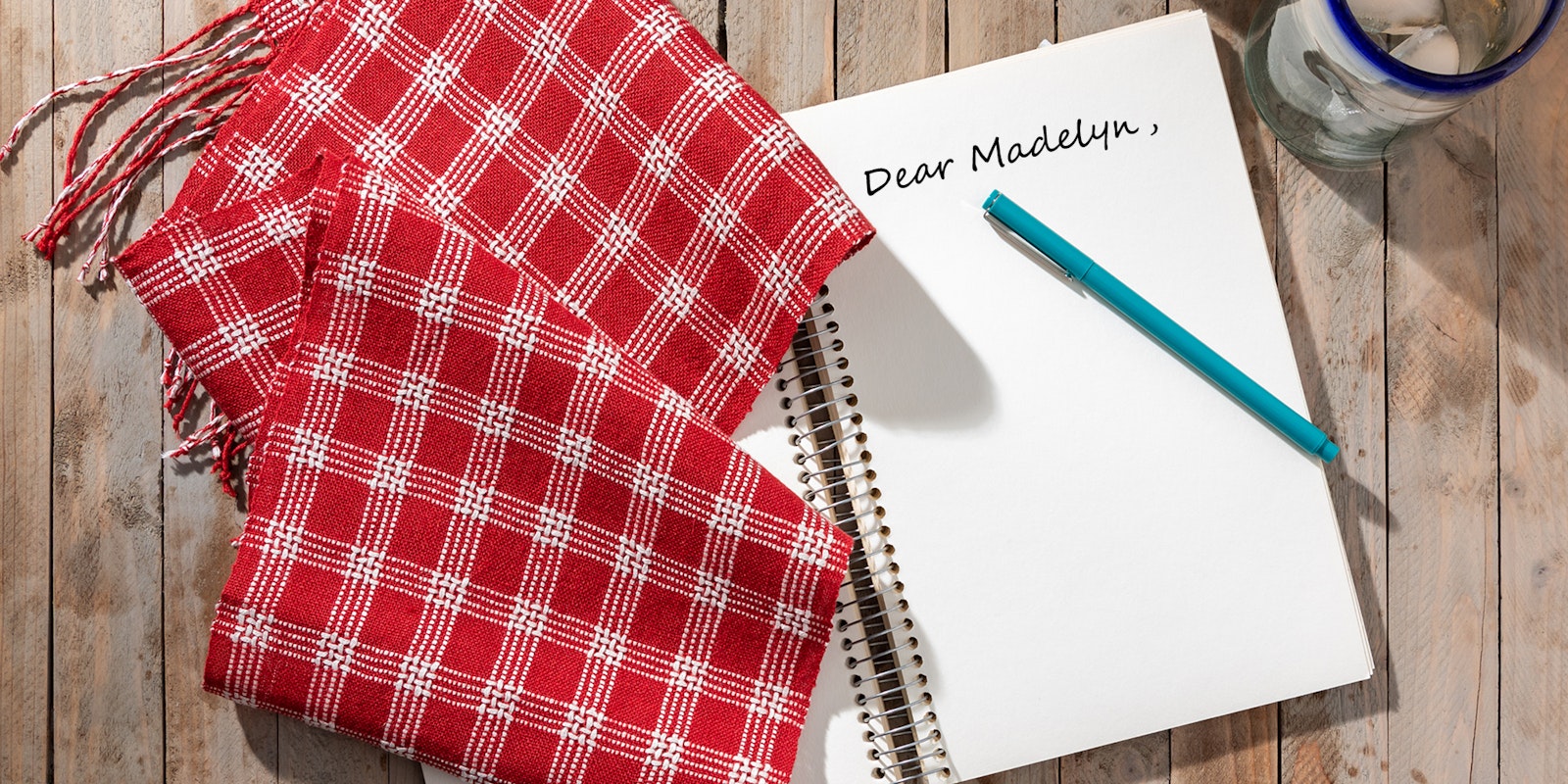Hello Madelyn!
My question is about draw-in. I keep reading about problems that people have when their selvedges have too much draw-in, but I have virtually no draw-in at all when I weave, possibly because I pack the edge threads more densely and am careful when I weave each pick. Is draw-in considered something to be avoided if possible, or is it beneficial in some way? If the latter, is there a measurement or golden ratio for how much draw-in a weaving should have?
—Carol
Hi Carol!
Your worry that you are doing something wrong because you have little or no draw-in is making me smile! The amount of draw-in that does occur in any weaving depends on a number of factors. First of all, the goal always is to have smooth, even selvedges with no unsightly loops of weft protruding, and the density of the warp threads on the selvedge should be as close to the density of the rest of the warp (i.e., not more crowded on the edges). Different types of cloth, different warp and weft setts, different yarns—all make achieving this a different sort of task for each.
First of all, if you are doing weft-faced weaves, such as rugs, particularly with rags, you might actually notice little or no draw-in (if you are doing everything right). With rag wefts, the width of the piece off the loom might even be greater than the warp in the reed because the weft does have to protrude a bit as it goes around the edge thread since it is so thick. For all weft-faced pieces, though, you do have to bubble or angle the weft sufficiently or you will have draw-in.
For warp rep, there isn't much problem with draw-in at all, since the warp does all the bending over and under the thick weft and you can send that weft almost straight across the fell without a problem. Warp rep fabrics can also end up with a fabric width the same as the width of the warp in the reed or even slightly greater, also because of the turns of the thick weft extending from the sides.
Most balanced weaves, though, relax when tension is removed. In that relaxation, the weft, which did not bend when you inserted it in the shed, uses that extra slack you gave it to wind over and under the warp threads. The warp does the same thing but we aren't so aware of it (we'd have to have measured the length of warp we used against the length of the woven fabric to calculate that difference, which is called take-up). Even when we measure the cloth under tension to calculate take-up, the warp has already done some of its bending as we beat the weft into it; some take-up has already occurred during weaving, more will occur when we release the tension. With balanced weaves, to avoid draw-in but also to have smooth, regular, perfect edges, just the right amount of weft angle or slack has to take place with each pick. It's always a challenge and the results are worth the effort it takes.
If you mean that you sett your selvedge threads closer together than the rest of the warp, that is usually something I don't like to do because then that extra density will show on the edges (unless you want greater density there for some reason). I never double the edge thread as many weavers do, either, just as a personal preference (and probably no-one notices the difference but me).
And to answer your question: I can't think of any specific advantage to draw-in!
—Madelyn

